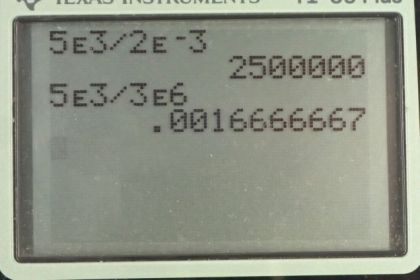Question
(a) Will the electric field strength between two parallel conducting plates exceed the breakdown strength for air () if the plates are separated by 2.00 mm and a potential difference of is applied? (b) How close together can the plates be with this applied voltage?
Final Answer
- This does not exceed the dielectric strength of air.
Solution video
OpenStax College Physics for AP® Courses, Chapter 19, Problem 17 (Problems & Exercises)

vote with a rating of
votes with an average rating of
.
Calculator Screenshots
Video Transcript
This is College Physics Answers with Shaun Dychko. We are going to calculate the electric field between these two parallel plates by taking the voltage divided by their separation between them. So, that’s five times ten to the three volts divided by two millimetres which is two times ten to the minus three meters which is 2.5 times ten to the six volts per meter. This is less than the dielectric strength of air which is three times ten to the six volts per meter and so sparks will not fly between the two plates and in part B, we will find the minimum separation, such that sparks don’t fly, by taking the voltage divided by the maximum possible electric field between them which is three times ten to the six volts per meter and we end up with 1.7 millimetres is the smallest separation that would be possible before sparks would fly.
